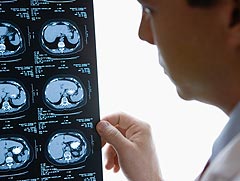60 Years of Innovation
Scotland has long enriched the world of medicine. Millions of people are alive today or leading better lives thanks to the ingenuity of Scottish doctors and scientists.
Two of the world’s most important drug discoveries of the second half of the 20th century were made by Scots – salbutamol to relieve asthma attacks by Sir David Jack and beta blockers used to treat heart conditions by Sir James Black. This was followed by the development of the world’s first artificial vaccine against hepatitis B infection by Professor Ken Murray in Edinburgh.
Other landmarks included Sir Dugald Baird’s pioneering work in improving maternity care and reducing childhood deaths in Aberdeen and the establishment of Europe’s first coronary care unit at Edinburgh Royal Infirmary which led the world in the immediate treatment of heart attacks.
Scotland has also made a major contribution to improving medical diagnosis. Ultrasound scanning, now in daily use around the world, was developed by Professor Ian Donald in Glasgow in the 1950s.
Similarly, scientists in Aberdeen, led by Professor John Mallard, produced the first clinically useful images from an MRI (magnetic resonance imaging) scanner in 1980. It signalled the birth of a major new diagnostic tool which has revolutionised the detection of disease within the soft tissues of the body. Like ultrasound, it is now in common use.
Less eye catching but no less important has been the influence of Scots on wider medical thinking. Archie Cochrane, who was born in Galashiels, was one of the pioneers of evidence based practice. The Cochrane Collaboration established in his memory now has groups across the world evaluating treatments based on review of the evidence of trials.
Scottish surgeons were also among the first in the world to monitor the outcomes of operations to improve their practice. This system, which began in Edinburgh over 50 years ago, has developed into the Scottish Audit of Surgical Mortality. It played an important role in assisting the early development of specialist surgery in Scotland. The UK’s first kidney transplant was carried out in Edinburgh in 1960 and Professor Alfred Cushieri in Dundee was one of the pioneers of keyhole surgery.
Another major contribution was made in 1974 with the development of the Glasgow Coma Scale by Bryan Jennett and Graham Teasdale. It gave doctors the first standardised method to assess the level of consciousness of a patient after a head injury. Again, it is used around the world.
The wealth of innovation in NHSScotland led to the establishment of Scottish Health Innovations Ltd (SHIL) in 2002 in response to a commitment made in the health white paper A Plan for Action, a Plan for Change (2000). SHIL works alongside NHS Boards to identify, protect and develop those ideas generated by NHS employees that will improve patient care and provide financial benefits to NHSScotland.
Progress continues today with major initiatives such as the Scottish Translational Medicine Research Collaboration which aims to speed up the development of new treatments and Generation Scotland which aims to shed new light on inherited diseases.
These are just some of the many ways Scotland has and is contributing to worldwide knowledge in understanding, identifying and treating human illness.
Alison Spaull
Chief Scientist Office
- Further information
- Archie Cochrane
- Sir David Jack
- Sir Kenneth Murray
- Scottish Health Innovations Ltd (SHIL)

Video clip:
"Scotland truly is a nation of innovators, and the NHS is a particularly rich source of good ideas. SHIL's commitment to the vision of improving patient care drives the success of the company, which has gained a well-deserved reputation in the field of medical innovation. We are currently in a period of intense activity and are managing a growing portfolio of innovative projects. The resultant spin-out and licence deals achieved are starting to generate income for both the innovators and NHSScotland"
Dr Sandy Allan, Chief Executive Office, Scottish Health Innovations Ltd
In 1977 Professor Ian Donald recalled the scepticism that greeted his work on ultrasound scanning. He told of a clinician from Edinburgh who returned from a demonstration “only to announce to a hilarious group of students that in Glasgow we needed a machine, then costing about £10,000, to diagnose an ovarian cyst which he with God-given clinical acumen could diagnose with a two-penny glove.”
